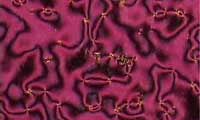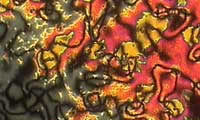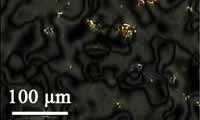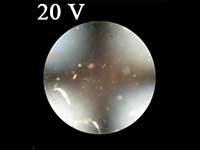Tokyo Tech's Hideo Takezoe and colleagues in the United States have established a means of verifying the biaxiality of liquid crystals accurately. Better understanding of biaxiality promises to spur the development of new kinds of liquid crystal devices that feature fast switching. Nuclear magnetic resonance and X-ray diffraction are traditional means of structural analysis. Those methods are not especially effective, however, in detecting error caused by the substrates that support the liquid crystals.
Takezoe and his colleagues have shown that measuring the intensity of light transmitted through a layer of liquid crystal as a function of an external electric field can provide an accurate, quantitative verification of biaxiality. They performed their experiments with liquid crystals that possess positive dielectric anisotropy.
The researchers synthesized A131 molecules for their experiments and used cell samples five micrometers thick. They discovered the first dielectric sign inversion ever detected with bent-core liquid crystals. Their methodology promises to be applicable to liquid crystals of other shapes and to be useful in distinguishing spontaneous biaxiality from surface effects.
K. V. Le, M. Mathews, M. Chambers, J. Harden, Q. Li, H. Takezoe, and A. Jakli
Physical Review E 79, 030701(R) (2009).
Department of Organic and Polymeric Materials

The molecular structure of A131.
Textures under homeotropic conditions:
. Any information published on this site will be valid in relation to Science Tokyo.







